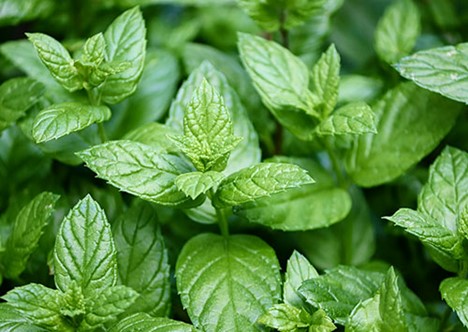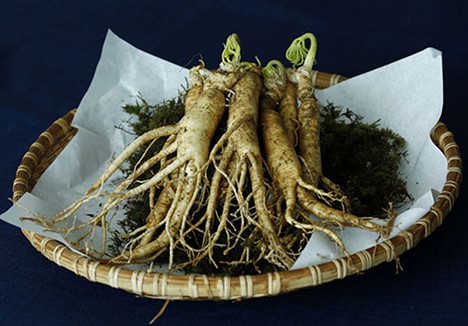Since the beginning of time, people have looked for treatments for ailments and pain. Certain medicinal plant properties were discovered, noted, and passed down to future generations using this method.
Long before recorded history, plants were providing health benefits. Plants are also the source of many modern conventional medicines. For example, cinchona bark is used to create malaria-fighting medicines. Plants are the richest source of chemicals for over 70% of modern medicines in India, aside from Ayurvedic remedies.
It’s reasonable to believe that using plants as medicine is not a strange idea. The most extensive plant medicine history with substantial current significance is found in India. There are many nearby plants whose efficacy, availability, and cost may be securely attested because roughly one-fifth of the plants in India are used for medicinal applications.
Today, we use medicinal plants extensively in all aspects of our everyday lives, including food, medicine, tea, cosmetics, and even as objects of devotion for some species. According to repeating patterns in the practice of Ayurveda, a natural system of medicine that originated in India over 3,000 years ago, natural herbs with powerful medicinal properties are now preferred to chemically created medications.
Medicinal Plants
Here is a list of powerful medicinal plants.
Chamomile

Another medicinal plant with little daisy-like blossoms, chamomile is known to offer anti-anxiety qualities. Most people are familiar with it because it is a popular tea flavor (over 1 million cups are consumed daily, according to a review from Trusted Source), but it can also be taken orally as drinks, capsules, or tablets.
Fragrant, anti-inflammatory, antispasmodic, carminative (aids digestion), and stress-relieving nerviness are all possible uses for chamomile. It has been applied topically for painful skin or asthma as well as in hair dyes and shampoos. The most popular plant used to ease tension and stress is probably chamomile.
Health Benefits of Chamomile
- Prevent diabetes and spasms in the muscles.
- During pregnancy, reduce morning sickness.
- Protection from bacterial infections
- Fight pain from teething and inflammation.
- Lowers the likelihood of cancer.
- Maintain blood sugar balance and lessen heartburn.
Echinacea

Echinacea is frequently used for wound healing, as well as to prevent or treat infections, illnesses, and colds. Numerous studies have investigated how well Echinacea prevents or cuts down the duration of a cold, but none have come to a firm conclusion. Numerous studies have shown some advantages to the use of herbs for treating upper respiratory infections.
Because other research has also indicated that long-term use can affect the immune system, it is advisable to use medications only temporarily. Always ask your doctor whether any medications you are taking could interact with each other. Echinacea allergy symptoms may be more common in individuals sensitive to plants in the panacea family. Ragweed, marigolds, and daisies are all members of the daisy family.
Health Benefits of Echinacea
- Echinacea plant roots are frequently exported for medical purposes.
- The best anti-inflammatory plant for stiff joints
- Encourage blood cell development.
- Increases the body’s natural immunity.
- Decreased risk of getting a cold, bronchitis, or sore throat.
Gingko
Ginkgo is one of the oldest native trees, one of the first homoeopathic plants, and a key herb in Chinese medicine. It is also one of the oldest tree species. The leaves are used to make extracts, capsules, and tablets; they can also be dried and drank as tea.
Its capacity to improve brain health is probably its best-known feature. According to studies, ginkgo can help those with moderate-to-mild dementia. There has been recent research on a substance that helps treat diabetes, and there are still more studies being conducted, including an animal study that suggests it may affect the mending of bones.
Ginger

Ginger, which is regarded as a super food in the West has several medicinal properties. Ginger plant helps with osteoarthritis and has potent antioxidant, anti-inflammatory, and anti-diabetic effects (OA). In addition to improving brain function and reducing the risk of Alzheimer’s, ginger also lowers the incidence of infections. It is a simple treatment for nausea brought on by pregnancy or chemotherapy, as well as for indigestion, migraines, menstrual discomfort, colds, and coughs.
Health Benefits of Ginger
- Digestion can be balanced with ginger juice.
- After surgery, ginger may help prevent nausea.
- Improves the body’s absorption of nutrients.
- The body’s microcirculatory channels should be cleaned and charged.
- Boost efforts to combat asthma, diabetes, and cancer.
Peppermint

Since peppermint has antibacterial properties, hikers have been known to chew peppermint leaves before drinking from a stream to remove bacteria from the water. The properties of peppermint include being choler tic (a bile secretor), antimicrobial, and stimulant. A cough or cold might be relieved with peppermint tea.
Despite its ability to tolerate a tiny portion of shade, peppermint likes a sunny position with moist soil. Peppermint’s medicinal potency will increase if it is planted in a sunny area, which will increase oil production. Although peppermint is less invasive than some of its relatives, garden mints are known for their aggressive growth. Peppermint stems and leaves should be harvested frequently to promote compact growth. Harvesting the leaves both before and after blossoming is best.
Health Benefits of Peppermint
- The high methanol content in peppermint can inhibit prostate cancer.
- Prevent sinus infections successfully.
- Enhances the body’s capacity to absorb nutrients and its digestive system.
- Pain in the body is immediately relieved.
- The use of peppermint oil may improve concentration and memory.
Garlic

A member of the onion family, garlic is used in many different meals across the world. The herb garlic is also well-liked. It can treat a variety of illnesses. It is nutritionally sound and low in calories. Vitamin C, B6, manganese, and fiber are all present in garlic. Garlic’s sulfur-rich, highly potent aroma can deter snakes and pests alike.
Health Benefits of Garlic
- Helps in improving your immunity.
- Quick tooth relief and bodily detoxification.
- Enhances the body’s capacity to absorb nutrients and maintains intestinal balance.
- Improves iron metabolism and allergy prevention.
- Stronger cancer-related infection defense.
Ginseng

Aphrodisiac, tonic, and even a general cure are all uses for ginseng. The research on ginseng’s usefulness is unknown, in part due to the fuzziness of the terms “vitality” and “quality of life.” The ginseng that is marketed varies widely in quality. Arrhythmia and high blood pressure are adverse effects. It is safe, according to the FDA. Dioxin, heparin, estrogen, corticosteroids, NSAIDs, and warfare should not be combined with it. People with diabetes shouldn’t take ginseng.
Eric Scott is a content manager for Econutplants.com.
Related Articles & Free Email Newsletter Sign Up
How to Grow and Use Echinacea Purpurea




Comment here